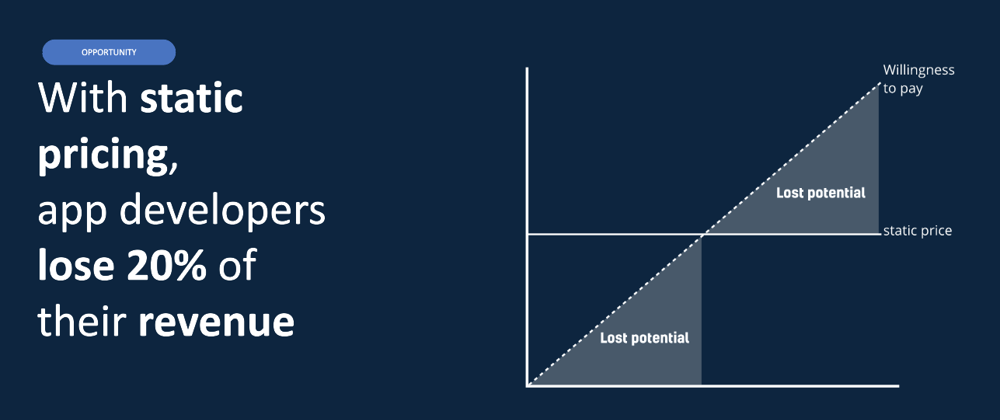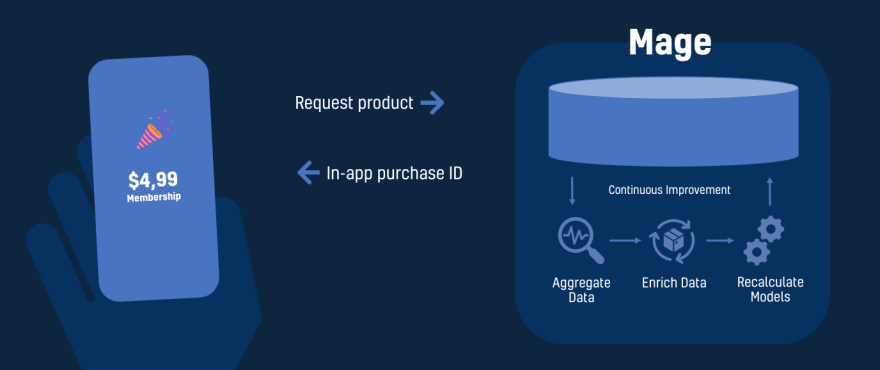Thousand of companies and indie developers are involved in the ever-growing market of mobile apps. Competition is growing. The mobile market is thriving.
The job of a successful app publisher is hard. He needs to listen to the users' feedback, develop and publish new updates, watch out for the competition, and manage marketing campaigns. In other words, monitoring and optimizing everything on an ongoing basis is crucial. Managing resources, especially with a 30% revenue cut from the platform providers like Apple or Google, is essential.
One often unused optimization and growth strategy due to its complexity is dynamic pricing.
What is dynamic pricing?
Dynamic pricing is a pricing strategy that is all about flexible prices. Flexible prices mean that they respond to market conditions.
In general, prices adjust according to the demand of the market. The best-known example of this concept is the pricing of flight tickets or the gas price from your favorite gas station. Both businesses price their products via demand. If the demand is high, the prices will be high.
Another well-known approach is a dynamic price based on the buyers' location. We often see this with physical goods. A good example is the price of an iPhone, which costs more in Germany than in the USA.
Compared to static pricing, dynamic pricing's main advantage is that the seller meets the demand of a market with a better price. This way, the seller avoids opportunity costs. In other words, he makes more money. He knows what to charge because he knows what buyers are willing to spend.
Adapting dynamic pricing for mobile apps
Dynamic pricing is currently only available in a very simplified version in the app stores. Real dynamic pricing is mostly practiced with custom build software by very large and successful app companies like Tinder or Spotify. Most apps that use some dynamic pricing mostly follow two approaches: prices based on time and user location.
The idea of prices based on time is simple. Since we are talking about the mobile environment, the app provider knows its customer. He can segment between users who bought and users who did not buy after a specific period. If a user falls into the group of people who did not purchase anything, he will receive an offer with discounted prices. What a great catch!
The only problem with that strategy is that it will just work if the app publisher can reach the potential customer. Most people delete apps after a few minutes of using an app or days after installing it. In that case, in-app popups will not work. Push notifications might work out if the app is still on the user's phone. Sending emails will probably be the best approach, but the app publisher needs to know the email address for that to work. Also, the user needs to open the email, and please don't get me started on conversion rates of emails.
We can see that there is a massive overhead of technology needed to make this strategy work. An app publisher would need to develop an internal popup, a push notification, and an email system. That costs a lot of money.
The second approach is to base dynamic pricing on the buyers' location. A good example is segmentation by country.
Since the seller has some knowledge of his target market's purchasing power, he can set the base price in that market. Certain other countries receive discounts relative to that base price. Other countries with a higher purchasing power than the default market may receive a higher price relative to the base price. This abstract description could look something like the image below.
For this kind of pricing, a high intense and expensive market research is needed. App publishers need to evaluate markets and determine the regional prices. This process can take months, and the worst part, the optimum is never fixed due to ever-changing market conditions. Spoiler alert: it's a continuous process.
The pain in adapting dynamic pricing for mobile apps
Both ways (dynamic pricing based on time or location) represent excellent solutions. The only drawback is that both strategies are from enormous complexity.
App publishers may need to spend many resources on the development. They may need to hire market researches, data scientists, and other pricing specialists to implement a self-improving pricing system. This is why dynamic pricing is currently only seen in unicorn apps: It is simply expensive.
A fast and cost effective way to add dynamic pricing to mobile apps
We developed and continuously improving a system that can bring dynamic pricing to any mobile app. As of this time of writing, we invested five months of development time, so you do not have to.
Mage is a "dynamic pricing as a service" solution for in-app purchases. Mage is scalable and usable for all kinds and sizes of apps. Due to the way app stores work at the moment, Mage works just for apps that use in-app purchases as a monetization strategy.
With Mage, app publishers can adopt dynamic pricing without the need for expensive market research, data science, and development teams.
Mage makes manually interpreting reports as well as generating and implementing new prices a thing of the past. Mage is fully automated and continuously fed with new data from the App Publishers' target markets. Mage is affordable and offers a free plan for young apps, who are just starting their journey. The integration of Mage takes around two to eight hours, depending on the apps complexity.
How to dynamically price in-app purchases
First, you need to sign up via our Website. After that, you need to add your app, product groups, and products to our dashboard. Once you configured everything, Mage will give you instructions on setting up your app store products. The last step is implementing the simple, lightweight, and open-source Mage SDK. Currently, our mobile SDKs are available for iOS, Android, and React-Native Apps. The best part, Mage is free for small Apps. So check it out!









Oldest comments (0)